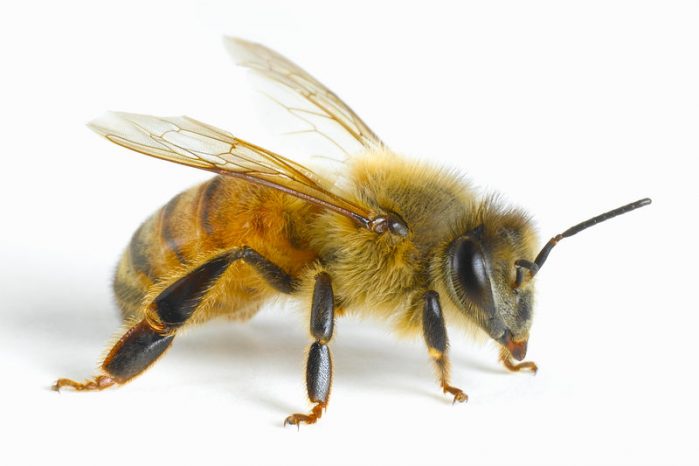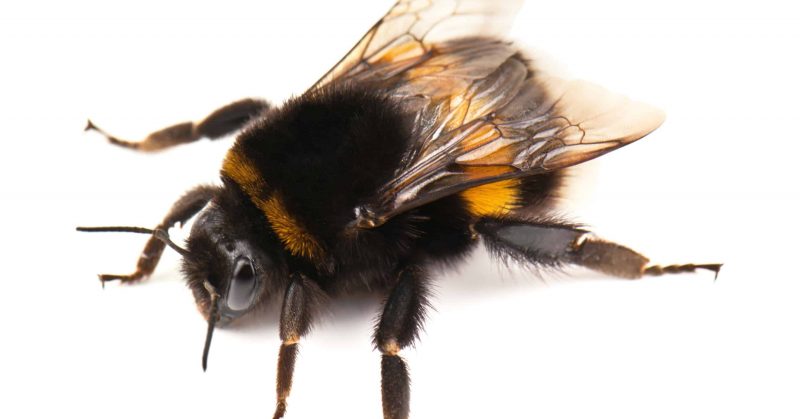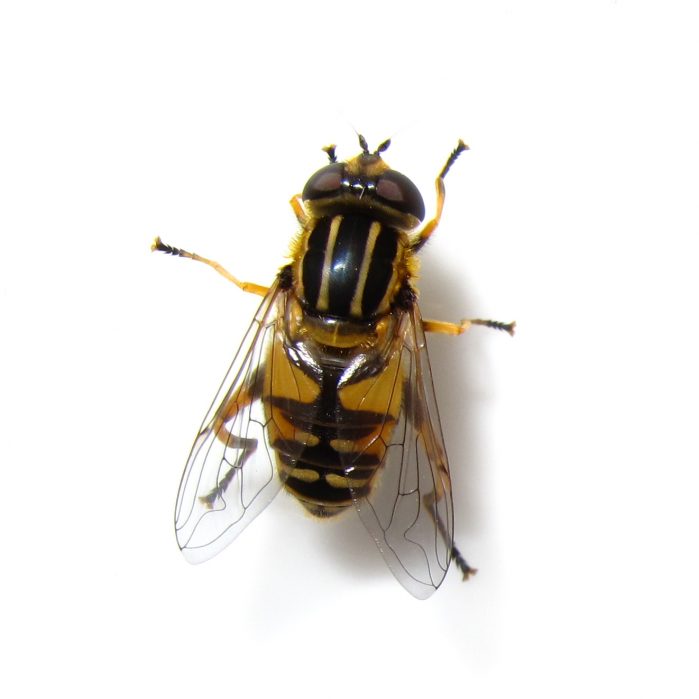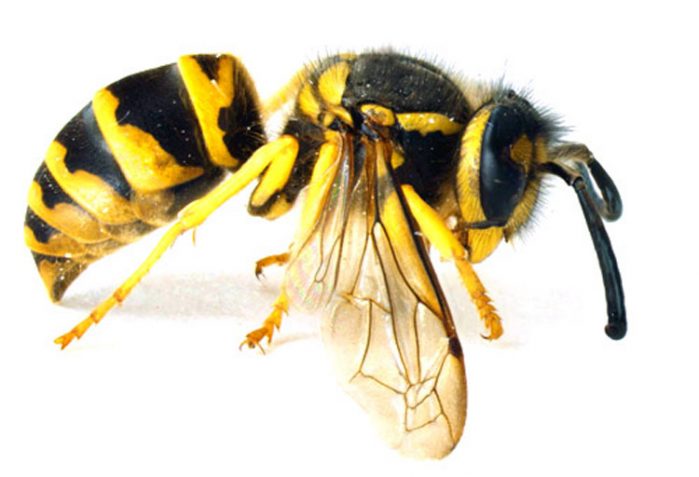- Inspiring People -
- 7mins -
- 2,809 views
A Fun & Fact-Filled “Comprehensive Guide to Yellow Stripey Things”
A funny yet informative guide to “Yellow Stripey Things” from The Hearty Soul Health Network.
The Hearty Soul’s “Comprehensive Guide to Stripey Things” will amuse and educate you
The spring, summer and even early autumn is a busy time for this wide variety of “yellow stripey things”, said The Hearty Soul in their Comprehensive Guide to Stripey Things, last year. Bumblebee, Dirt Dauber, Cicada Killer, Wasp or Yellow Jacket, etc… wait… Cicada Killer? Who knew there were so many different species of stripy thing? From where do they emerge? …and should we be concerned? Let’s take a look…


1. Carpenter Bees
Carpenter bees are primary pollinators and frequent visitors to suburban flowerbeds! When threatened, they show aggression by hovering in front of people/faces, but rarely sting. In fact, in many species of carpenter bees, the males have no stinger at all. The only real threat they pose is to wood structures because carpenter bees do not live in nests or colonies. They bore into wood and tend to prefer decaying or weathered wood, as opposed to new or painted wood.
Source: TheHeartySoul.com

2. Honeybees
Honeybees are not usually a threat – they’re just looking for nectar to make honey. A hive, however, should be dealt with especially if it’s too close to your home. If you have a bee colony you want to get rid of, an exterminator is NOT the best answer. Instead, contact a bee removal expert who can capture the queen and put the colony to good use!
Honeybees rarely sting unless provoked (usually if they feel the colony is threatened) Honey bees can only sting once and then die shortly after.
ALERT: These insects are considered vital pollinators within their ecosystem (and for farming, too), it’s best to relocate these bees rather than kill them. Always contact a professional beekeeper for assistance in this!
Source: TheHeartySoul.com

3. Bumblebee
These slow flyers are often seen visiting flowers in a garden. Most of these fuzzy, oversized bees are black and yellow, though some also have a tint of orange. Bumblebees live in small colonies, and they defend their nests quickly by stinging and pursuing threats to save their hives.
They build their nests out of pollen clumps, usually in the ground or a dense grass clump. Their stings are known to be painful -however, they rarely sting while rummaging in flowers, just in defence.
Source: TheHeartySoul.com

4. Hoverfly
Hoverflies look like small bees and wasps. They are the helicopters of the insect world, often seen hovering in the air, darting a short distance, and then hovering again. The hoverfly doesn’t have a sting in its tail and is completely harmless. Their bright color is to tick predators, such as birds, into thinking they can sting.
Source: TheHeartySoul.com

5. Paper Wasp
Paper wasps feed on nectar and insects, which technically make them a beneficial insect! They will rarely sting unless you get to close to their umbrella-shaped open-face nests. Nests are often found hanging from twigs and branches of trees and shrubs, as well as porch ceilings, door frames, eaves, deck floor joints, etc. Their sting is known to be more painful than honeybee stings and can produce reactions in those allergic to their venom.
Source: TheHeartySoul.com

6. Wasp/Yellow Jacket
These can be highly aggressive insects! They develop large colonies that are intensely defended. As a result, people can be swarmed in a matter of minutes, often getting stung hundreds of times. These insects are especially fond of hunting in and around trash piles and garbage cans. They are a common invader to outdoor picnics!
Source: TheHeartySoul.com

7. Cicada Killer
Cicada killers are only threatening if … well, if you’re a cicada. The cicada killer is a solitary type of wasp that’s often mistaken for a hornet. They’re most commonly found hunting cicadas in trees or burrowing in soft ground. Although the females have stingers, they usually reserve it for cicadas. Female cicada killers will only attack humans if they are provoked.
Source: TheHeartySoul.com

8. Dirt Dauber
Dirt Daubers are solitary insects most known for their habit of building nests out of the mud. They are capable of stinging, however unlikely to do so – even when disturbed. They’re not aggressive, and they do not defend their nests as social wasps do.
Source: TheHeartySoul.com
What to do if you’ve been stung
As we’ve learned above, different types of stripy thing are equipped with a stinger as a means of self-defence. This stinger contains venom that’s transmitted to humans during a sting. However, most people can recover quickly and without complications.
Symptoms You’ve Been Stung
- A raised welt around the sting site.
- A tiny white mark may be visible in the middle of the welt where the stinger punctured your skin.
- This venom immediately triggers pain receptors, causing a burning sensation.
- Usually, the pain and swelling recede within several hours of being stung.
Unless you’re allergic, most bee stings can be treated at home!
How to relieve a sting:
1. Wash the sting area with soap and water to remove as much of the venom as possible.
2. Apply a cold pack to the wound site to reduce swelling and pain.
3. Keep the wound clean and dry to prevent infection.
4. Cover with a bandage if desired.
Tip: Use hydrocortisone cream or calamine lotion for itching or skin irritation. Baking soda and colloidal oatmeal are soothing to the skin and can be used in the bath.
Severe reactions
Severe allergic reactions to stings require immediate medical attention! If you have an EpiPen, administer it as soon as symptoms begin. If you have a history of wasp allergies, administer the EpiPen as soon as you are stung. Then call emergency services.
Source: TheHeartySoul.com

